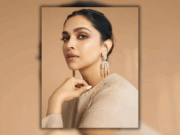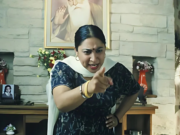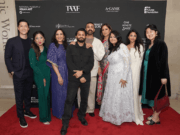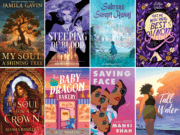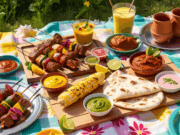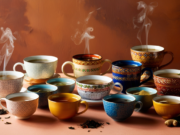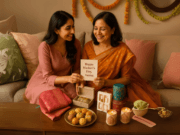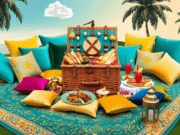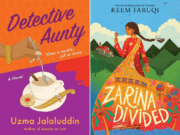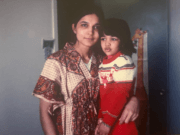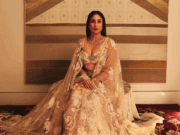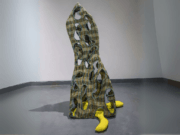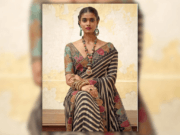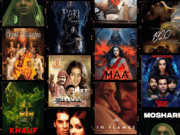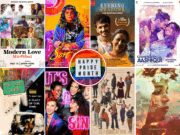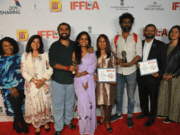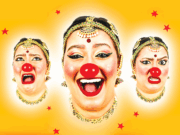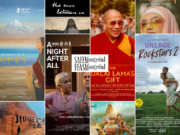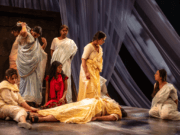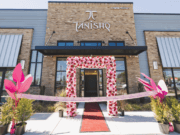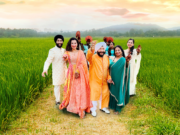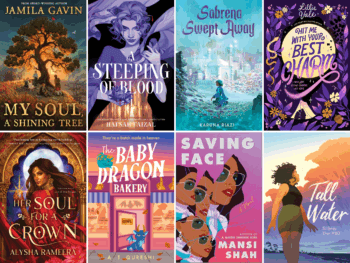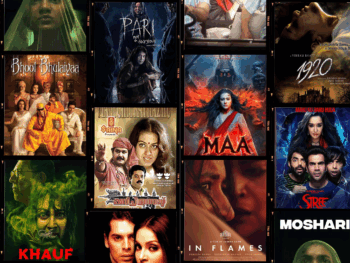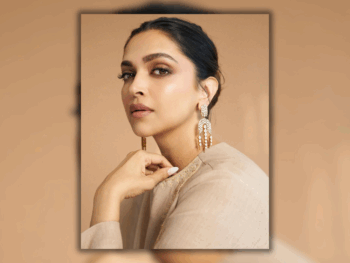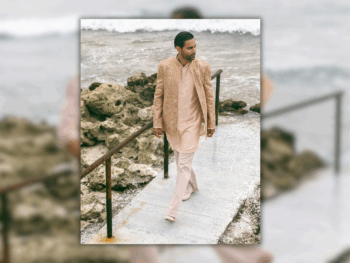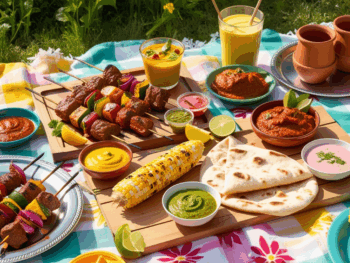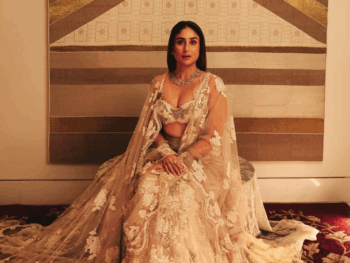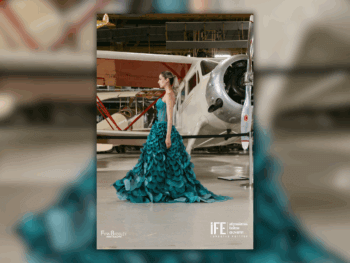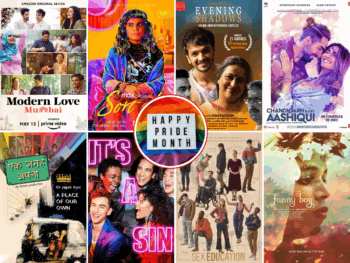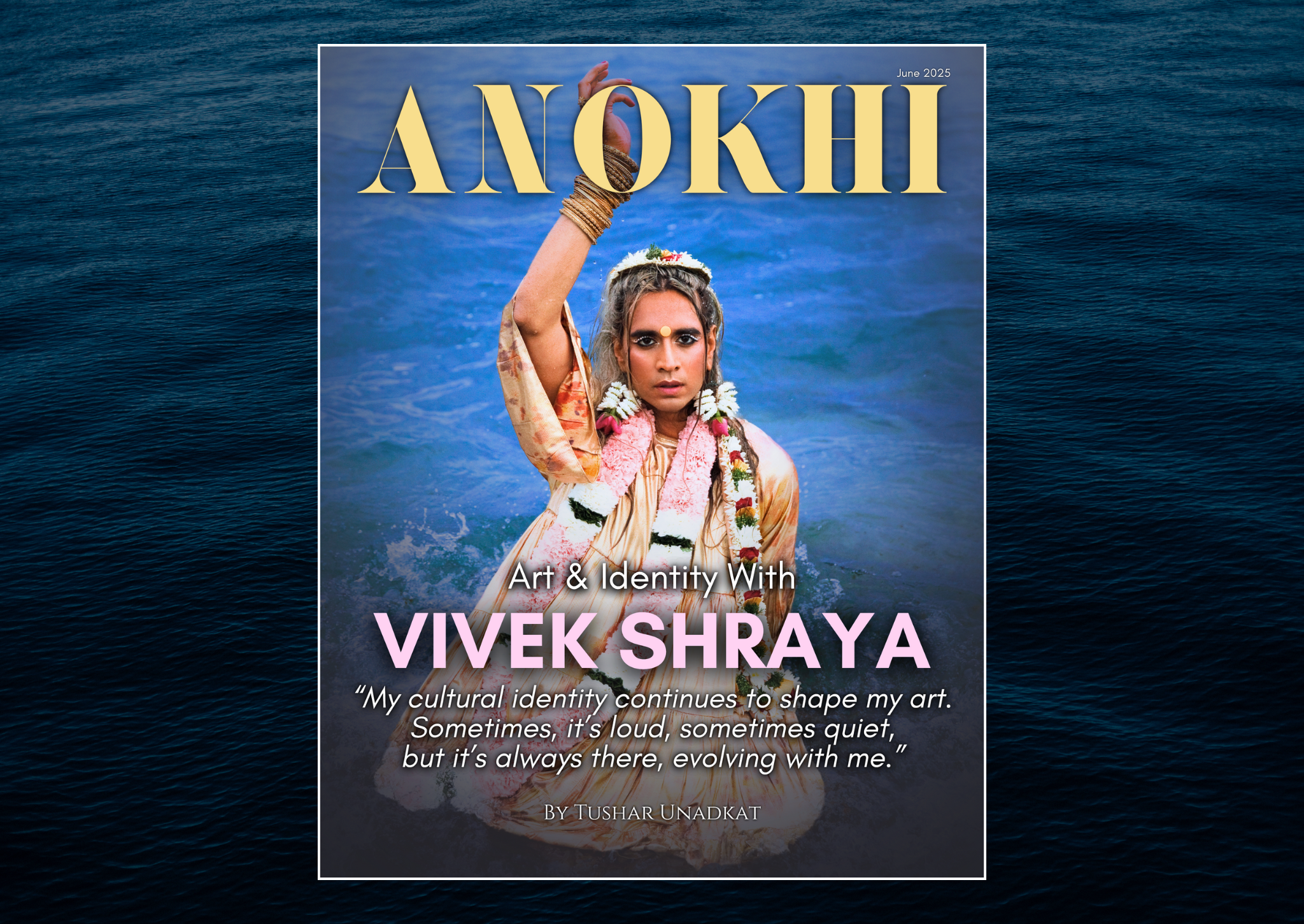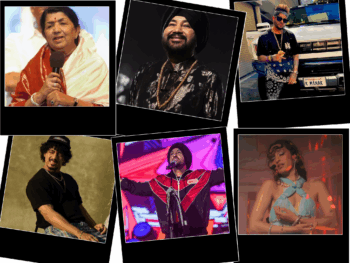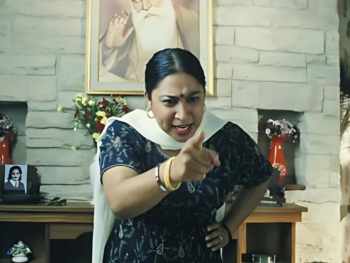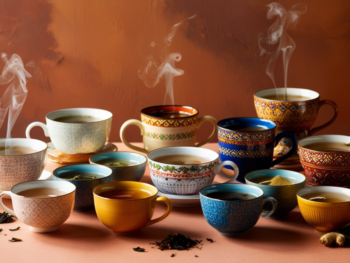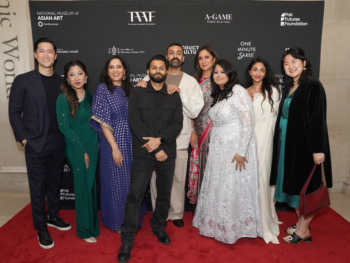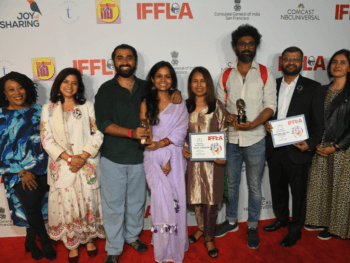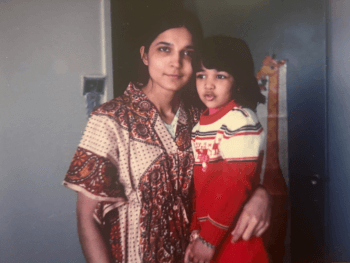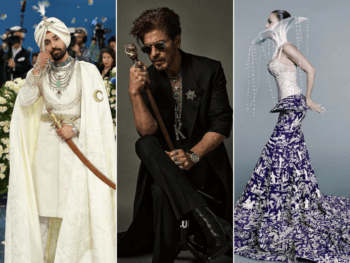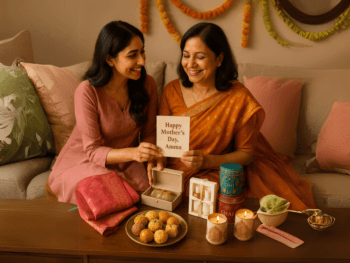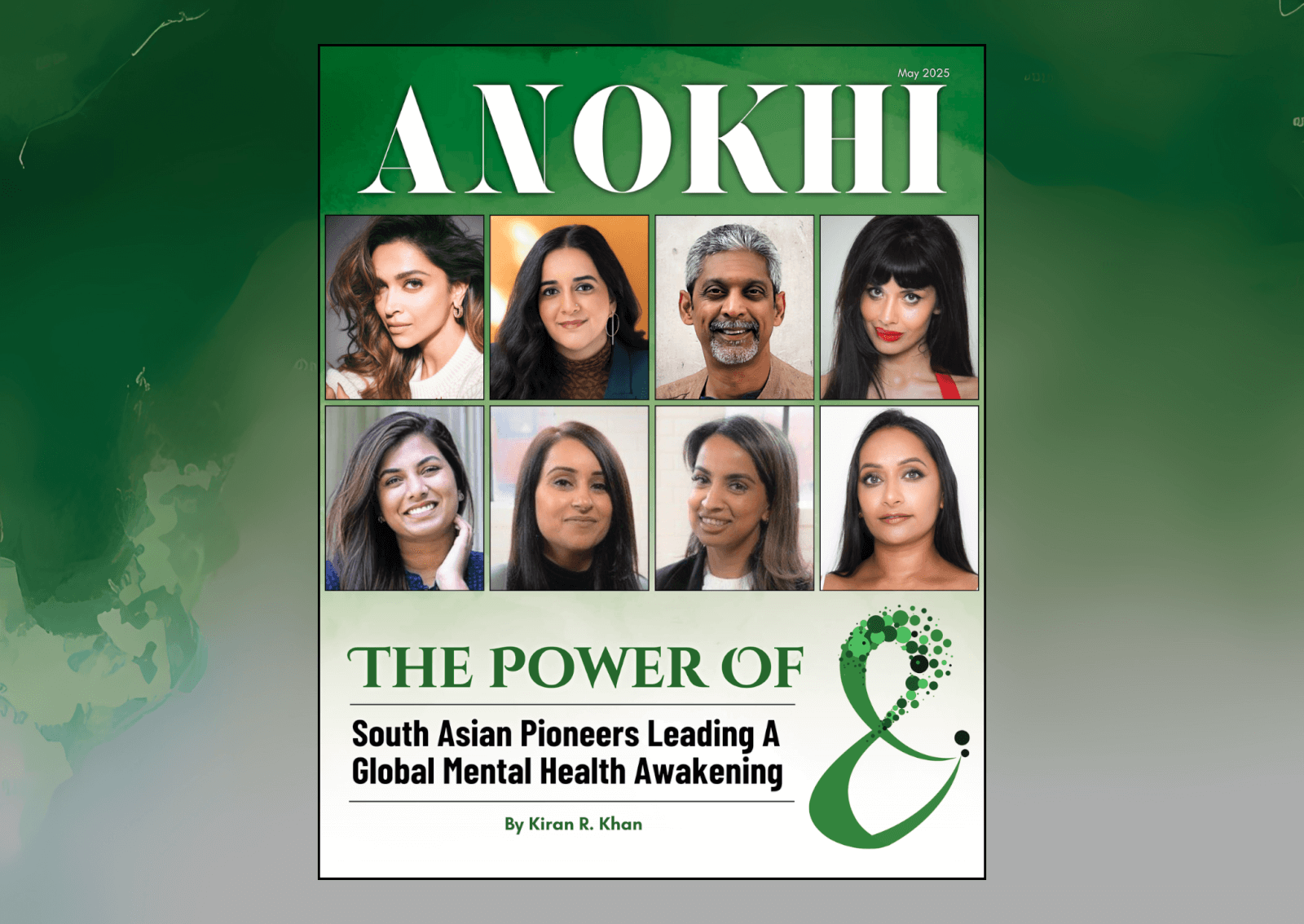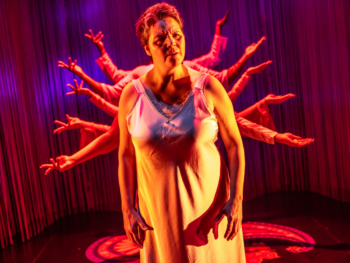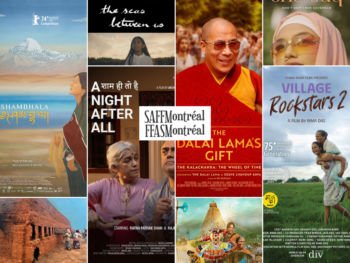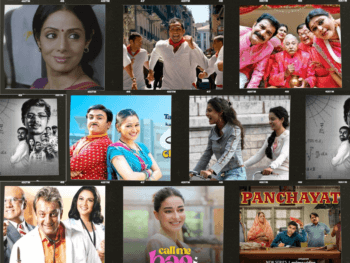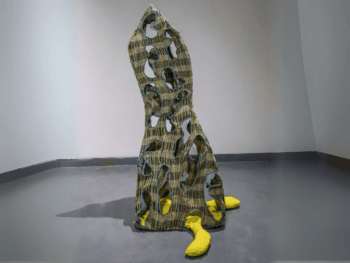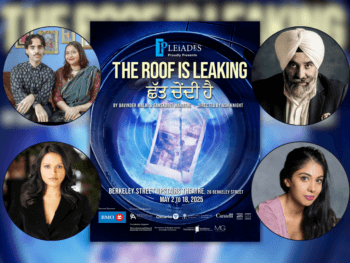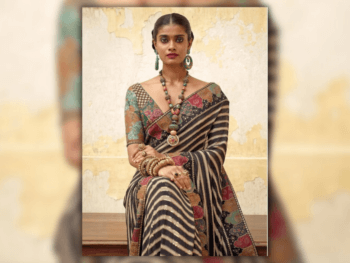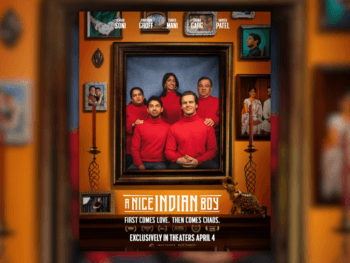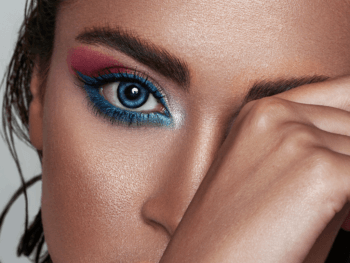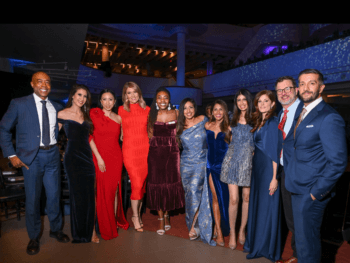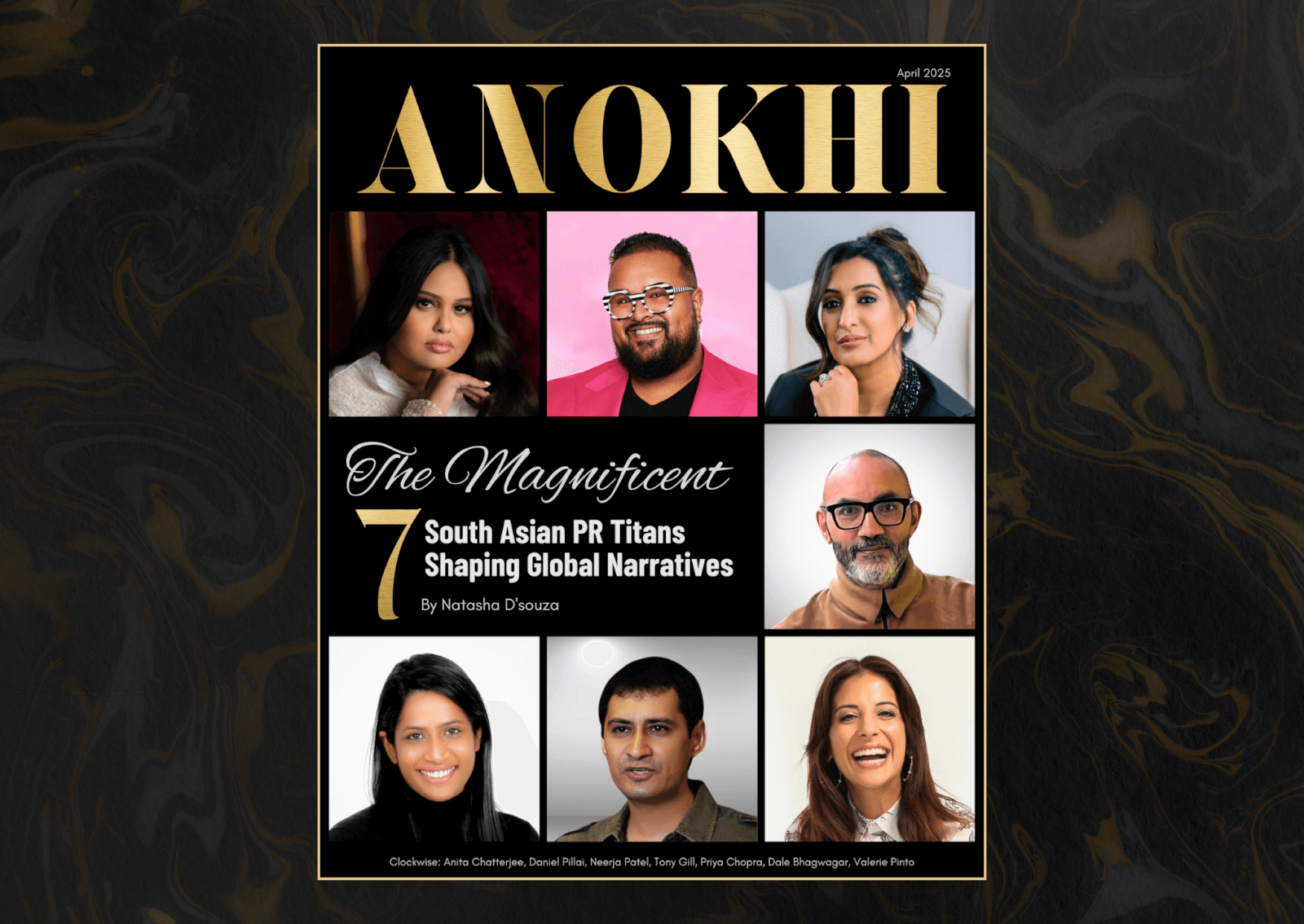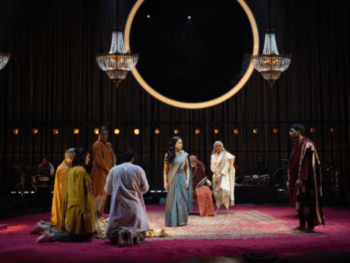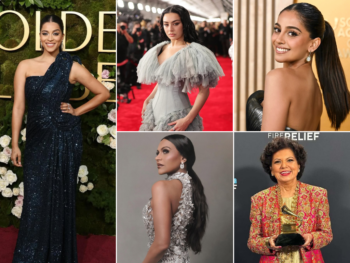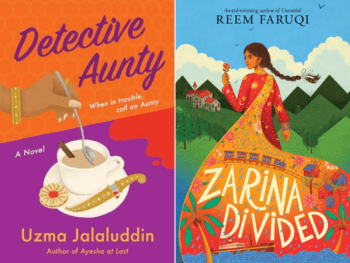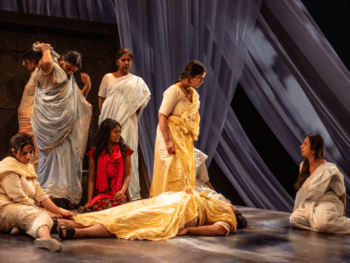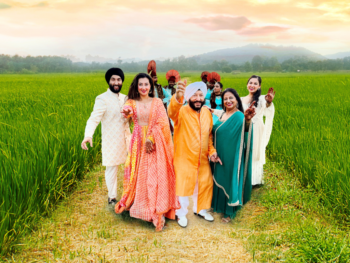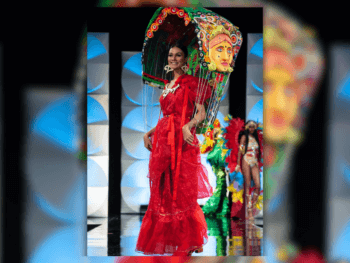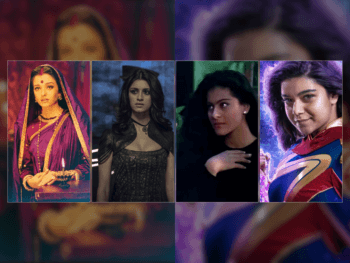
Politically Shaping her Designs
She is tired of terms like ‘East meets West’ and believes they are too simplistic to encompass the experience of being South Asian. Montreal-born Rashmi Varma definitely is unique, a quality that shines through her designs but not in the predictable fusion fad of having a specific Indian look with a modern twist. Varma refuses to adhere to the fusion Indo-Western cliché, stating, “The very fact that I’m Indian should be enough!”
Varma always wanted to be a fashion designer and her multidisciplinary background in political science and interior design clearly influence her work and set her apart from the rest. Studying political science helped Varma develop her world view, “You understand your choices and actions and what implications they have…where they fit in within the scope of things.”
Politically speaking, Varma is more than just talk and has used SAVAC (South Asian Visual Arts Collective) as a platform to express what she believes in. She is a respected performance artist, with a number of projects to her name, having acted as a curator, programmer, artist and performer with SAVAC. Her contributions include performing in Shelly Bahl’s Pink is the Navy Blue of India, which explored the notions of cultural cannibalism, specifically fashion’s role in consumer consumption. Varma also designed a gallery installation, in which she acted as a shopper engaging in the products of a clothing store, from touching fabrics to tasting them. The act was a satire on western concepts of Bollywood and Orientalist fantasies perpetuated by the media.
Living in India and Saudi Arabia have also shaped Varma’s worldview, and she travels to India regularly to design her new collections.
“You become aware of labour practices, social issues, the ethical production of your clothes and who you are selling to…” she says. Although she admits that art doesn’t necessarily have to be political, she does think it adds a layer of meaning, “You can use clothes as a medium to express socio-political concerns – and I believe clothing itself is political. What you wear, how you wear it and where you buy from is political.”
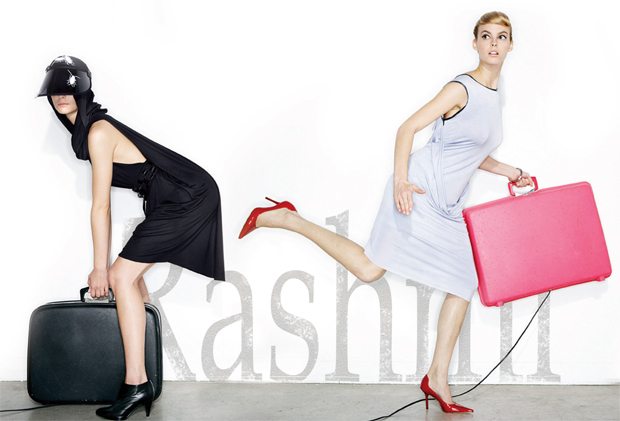
She believes it is vital to support the community of Indian craft workers, especially in an industry where clothes are mass-produced and machine made. She balances old techniques with new stylistic approaches, and she has a deep appreciation for traditional Indian methods of tailoring clothes.
She enjoys mixing traditional methods with non-conventional fabrics or shapes and vice versa. For example, taking kantha embroidery and applying it to a trench coat, she explains, “You take old methods, techniques and tools and apply them to new ideas, different surfaces and fabrics, or take them out of context.” Her work exhibits a more subtle cultural influence, such as jodhpur-structured pants.
Varma’s aesthetic is constantly being redefined, but it leans toward a distinguished minimalism; organic and textured. There is an obvious connection to architectural design in Varma’s clothing, from the powerful lines to the glossy accessories.
Her own personal style varies. “It’s quirky and subversive at times, elegant…I love dressing up!” she says. “I wish more people felt inspired to dress up on a regular basis!” Her favourite fabrics are natural: silk, cottons, jerseys and wool. She chooses to use solid fabrics to highlight her clothes with texture and form.
Her spring/summer 2007 collection is fresh and elegant. The main colours for the collection are black, white and a chalky grey, with splashes of lime green and fuchsia. The details lie in the pleating, innovatively styled backs, and shiny yet simple embellishments. The accessories are industrial and sporty, from protective headgear to sleek suitcases. The new collection is inspired by the concept of security in a post 9-11 world, specifically the heightened fear of travel, media hype, personal protection, migration and displacement. Varma wanted to have an androgynous feel to the collection, structuring oversized garments and utilizing basic colours to create this effect. The strongest pieces in the collection include a carefully pleated lime green top and a stunning black jersey stripe leather tank top.
Varma’s accolades are endless. From working with noted Canadian designers YSO and Denis Gagnon to recently snagging ANOKHI’s Sexy and Successful Award for Most Promising Fashion Designer, it’s no surprise that Varma’s talents are getting noticed. Her simple philosophy is key: Make beautiful clothes that others (including herself) would want to wear. She has certainly stayed true to her words.
WORDS SHENIZ JANMOHAMED
